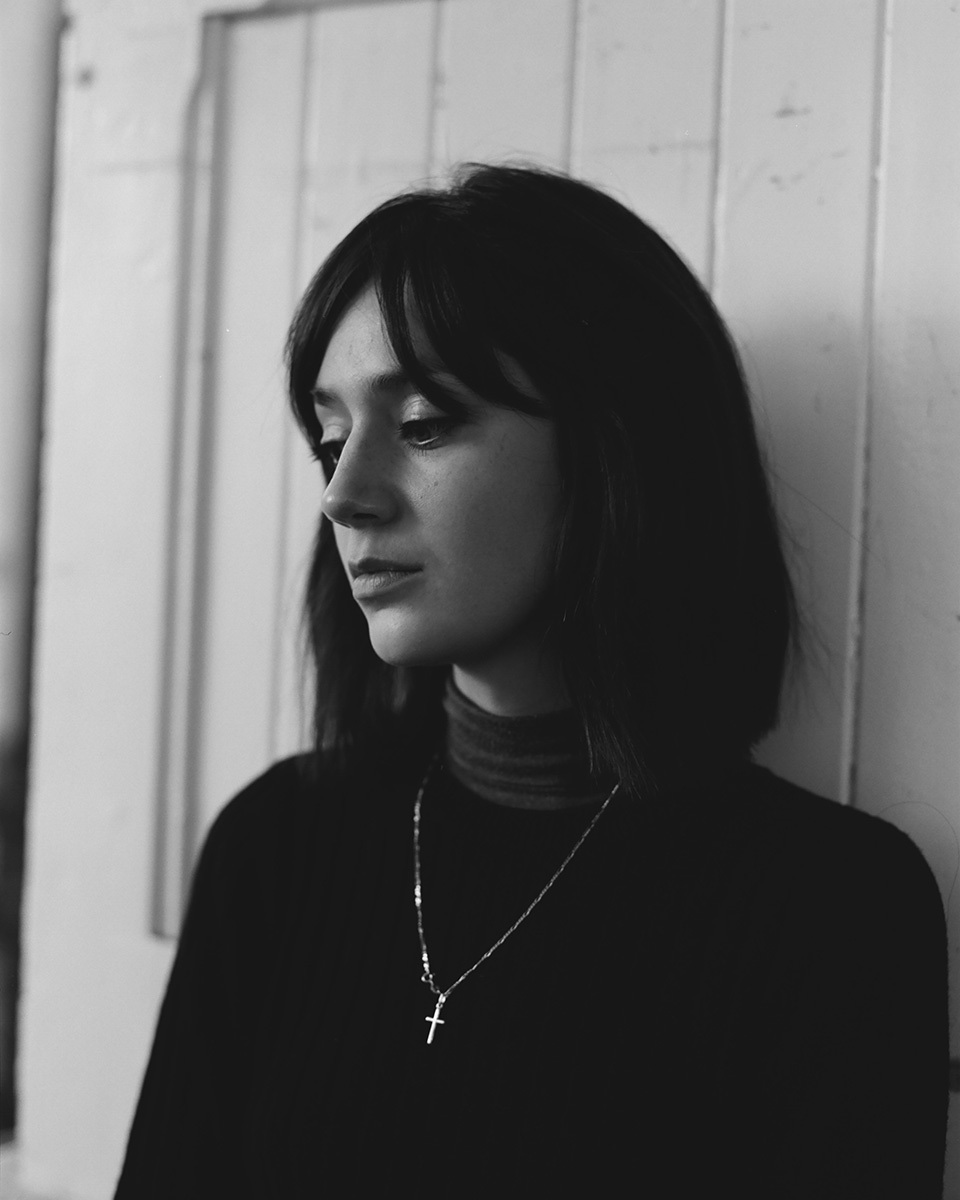Edinburgh-born designer Sam McCoach founded London-based brand Le Kilt in 2013 when a kilt she wore — one made by her grandmother — was met with much demand. Now, Le Kilt is stocked in key retailers including Dover Street Market, Harvey Nichols, and Selfridges. Sam’s take on this traditional garment and other wardrobe staples make Le Kilt the go-to uniform brand for all women who value quality garments that can be kept for years, with the potential to be passed down from generation to generation.

What’s the story behind Le Kilt?
My granny was a kilt maker in Scotland when I was growing up, and one christmas a couple of years ago, she made me a Black Watch kilt using all traditional techniques but adapting it slightly. Every time I wore it to work, some people would ask how they could get one and I said, “well, I guess me and my grandmother can make you one.” So we made a few for friends, and then I ordered a book called We Can Be Heroes by Graham Smith, which is about the 80s Blitz scene in London. There was a club called Le Kilt in Soho, and I’d had this idea of maybe building a brand around that kilt. Then I just registered the name, ordered different tartans I liked based on the one my granny had made me, and made the one kilt in different colors. That was kind of how it started. I did it for about a year and a half while working as a menswear designer at Fred Perry. Eventually we had a few stockists, so it wasn’t really a hobby anymore and I started to focus on it full time.
Did kilt making start with your grandmother or has it been in your family for generations?
It started with my granny. She’d moved from Italy to Edinburgh when she was 21, and she’s basically good at anything she puts her mind to. She started pleating fabric for a kilt maker in Edinburgh and freelancing at home. Then she got a job in their workshop and learned from there. When I was growing up, she’d make me lots of little tartan bonnets and dresses. Later when I started going to art college at 18, I’d visit her all the time and she’d teach me how to knit. When I started studying fashion, I didn’t even know how to sew a button, so I’d go around there and she showed me what to do.
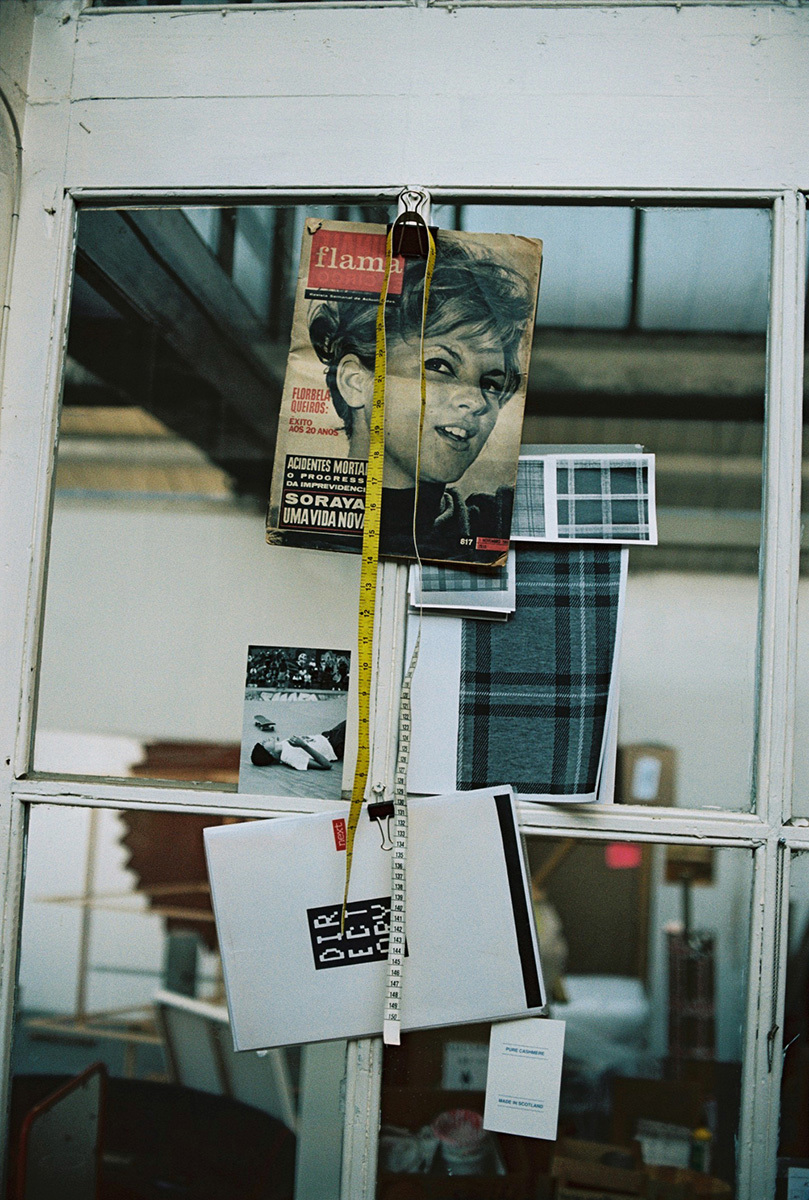
When did you first know you wanted to become a designer?
I honestly didn’t, I just loved clothes! I first went to art college to study painting because I’m super dyslexic, so going to university wasn’t going to happen if I didn’t do something creative. When I was there, I applied to study fashion at Edinburgh Art College and got in. Honestly, I didn’t know as much about high fashion as I probably should have, but I loved clothes, raiding my mom’s wardrobe, and watching The Clothes Show with her when I was younger. It kind of just happened as a happy accident. I completed my masters in Womenswear at Royal College of Art in 2010.
Do you have someone particular in mind when you’re designing?
Definitely. Although our customer ranges in all ages, which is amazing, she definitely shares the same values as me and my grandmother. She’s chic, understated, and knows what she likes. I don’t own many things but the ones I do I have, I love. I buy the same things over again. She’s feminine, confident, and strong. I feel confident when I have my kilt on. It’s a traditional dress someone would get as a boy or man that’s worn to special events and weddings in Scotland, but it’s been around in fashion and adapted forever. I wore a silky one to a wedding a couple of years ago in Scotland and I realized it was odd, as it’s definitely a men’s garment there.
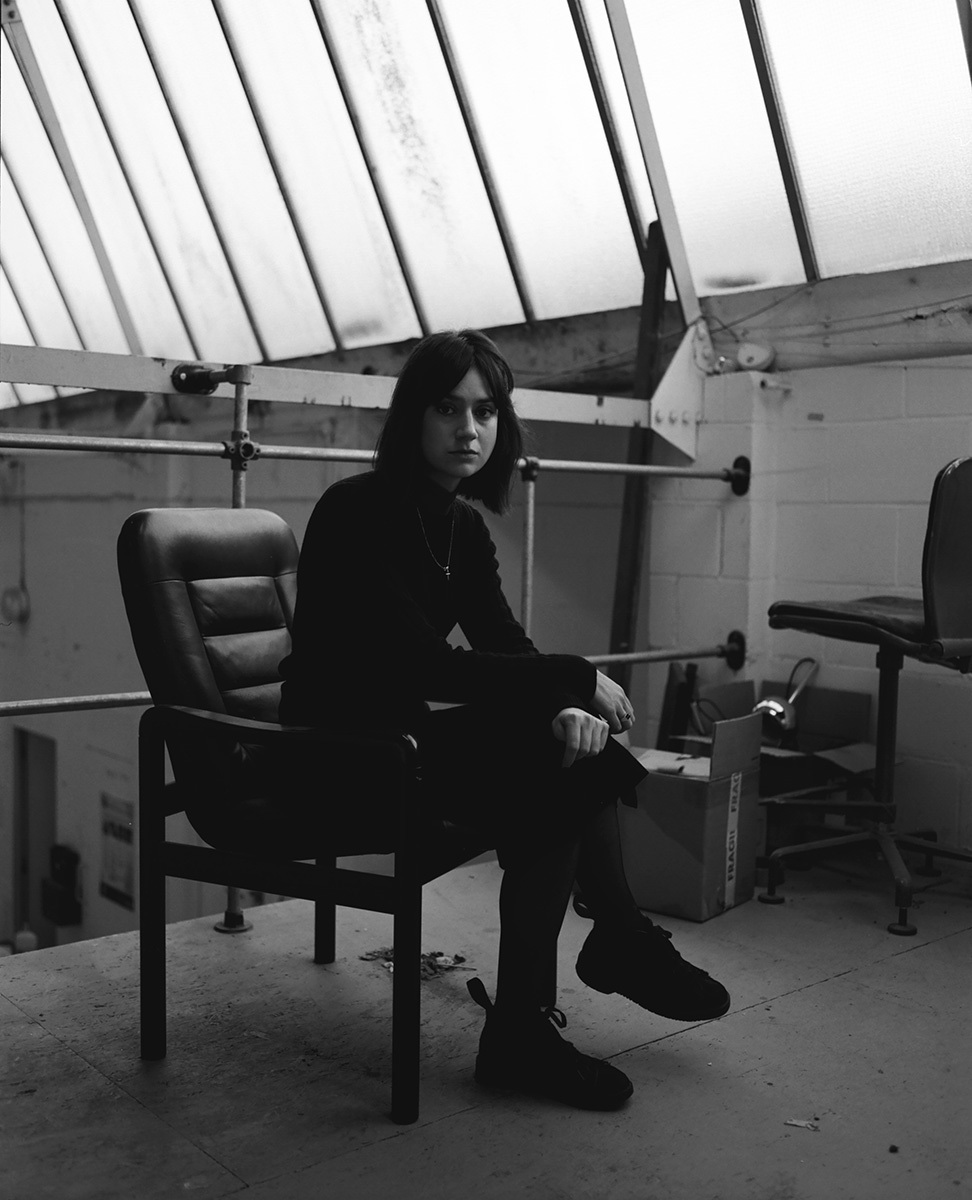
How does a typical working day in the studio usually go for you?
I get up at 6:30 am everyday and head to the studio at 8: 30 am. Have a coffee, check my emails, send online orders out first thing, and then go through the list I make every morning. I’ll tick off things like ordering fabric and getting it to the factories. Realistically, I don’t design until evening at home once all the paperwork is finished. I spend lots of time in Scotland visiting all of the various factories and kilt workshops that I work really directly with. I work with these amazing women called Elma, Vivienne, and Anne who are based in Falkirk who do these amazing knitting patterns. Historically, these were made for royalty that visited the town hundreds of years ago. We did seven pieces with them for fall/winter last season and they’ve recently had funding from a charity to keep this traditional Scottish practice alive.
How do you usually decide on textures and prints?
Quality. I like things to feel expensive and that they’ll last a long time. I don’t like things to feel flimsy, even down to a t-shirt. I like them to feel a little tough. In terms of color and patterns, tartans are all to do with clans. People ask me all the time if I pick them for a certain reason, but it’s all instinctive.
Where do you look to for inspiration?
I’m definitely not one of those people who are inspired by something completely different things every season. I’m always inspired by the same things, like how people adapt clothes and how they wear things. I’m inspired everyday by the way people put clothes together on the street. It could be a song I hear, or rediscovering the band Suicide and listening to them all over again. I’m a creature of habit, completely. I’m always inspired by my friends and everyone around me.
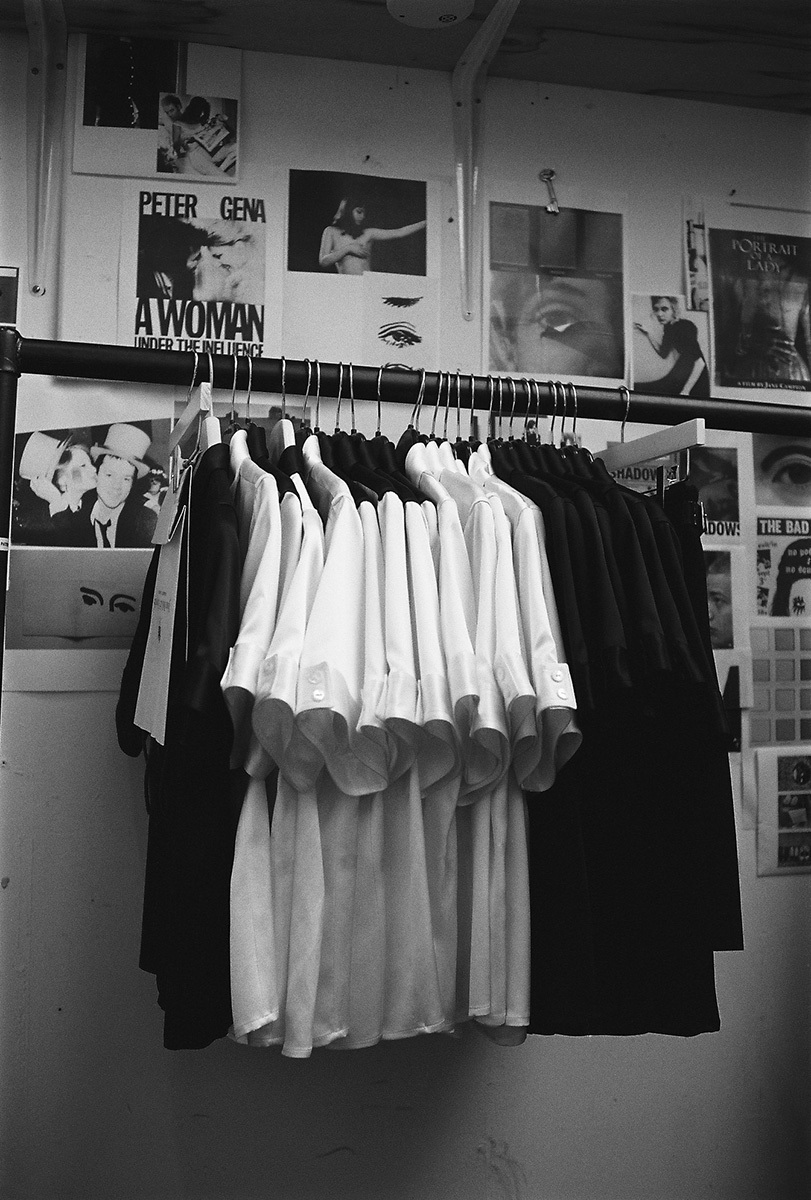
You’ve previously collaborated with British shoe designer George Cox. What are the most important things you consider when collaborating?
I’m currently working with Mackintosh on a new collaboration for fall/winter 17. I’m learning so much about Scotland’s craftsmanship from people who have worked in the industry for years, and I feel really lucky to be doing so. This is becoming more and more important to me when collaborating. I’ve never been someone who buries themselves in text books, mostly because I get distracted and find it really difficult. But I’ve always loved talking and learning from the people around me; I find myself talking to people at the bus stop at times. Asking questions is the best way to do things. It’s really important we pass on skills we have to others. I recently visited a knitwear training School in Hawick; this was really exciting and I would love to work with them in the future.
What’s your brand ethos?
Patience is becoming more important to my brand everyday. My grandmother taught me to do things well you need to learn and be patient. I was always in such a rush when I was studying. I didn’t understand what she meant at the time really as there was always a new deadline. But I do believe you need to really understand what and why you want to do something before you do it properly, and that takes time. It’s really important that I work with British factories, everything is made in the UK.
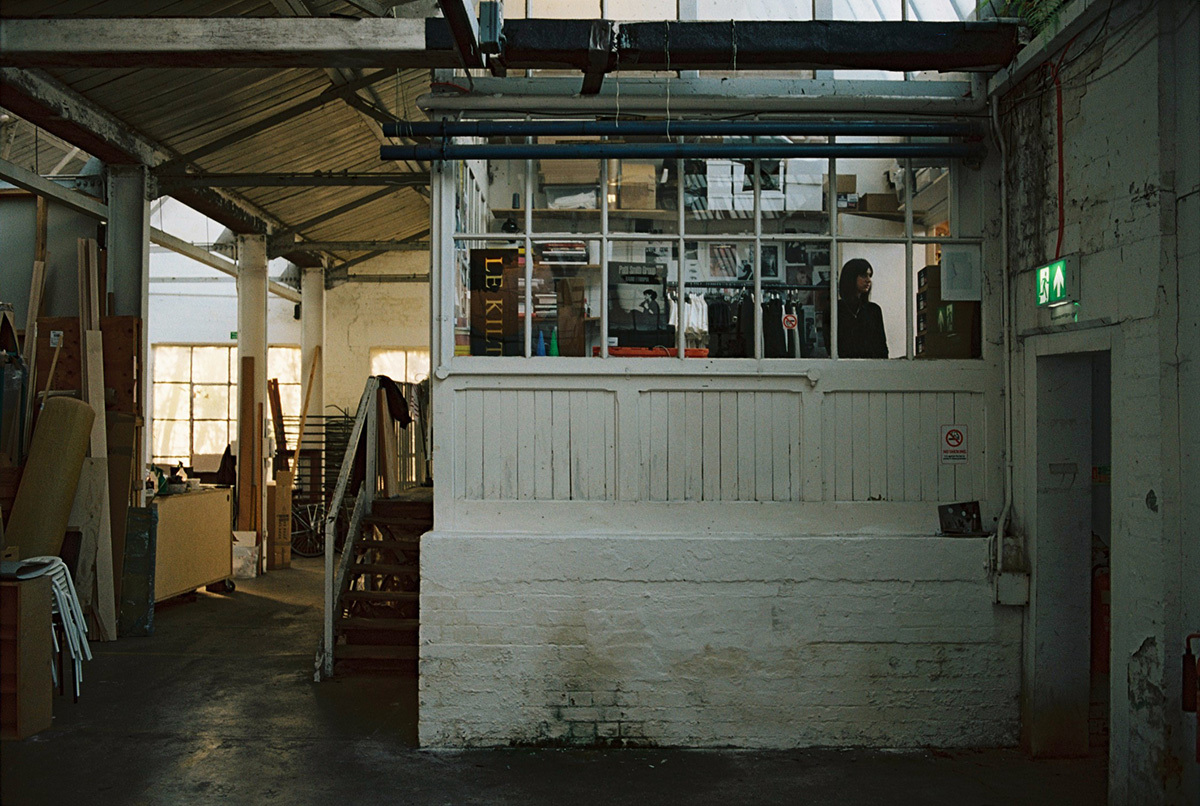
What advice would you give to independent designers just starting out?
Be confident and don’t do something in a hurry. I didn’t start Le Kilt until I’d worked somewhere else for five years, but that was the best thing I could have done because I really knew what I wanted to do by the time I did it. That doesn’t apply to everyone though, because I know lots of people who have been given an opportunity, ran with it, and done really well. Fashion is a competitive industry but it’s important to focus on what you’re doing and not worry about what others are doing — instead, respect and appreciate their work. Believe in yourself and others around you; you never know who you will meet at the bus stop.
What are your hopes for the future of Le Kilt?
I’d like to continue growing the collection itself and continue learning about my Scottish roots. It’s really exciting because there are so many things I’m learning. People sometimes think I’m an expert in Scottish craftsmanship but I’m not; I’m still learning more every single day from all of the people I’m working with when I go around Scotland. I just want to keep on doing that.
Read: Sofia Prantera is the renegade brain behind the streetwear brand everyone’s talking about.
Credits
Text Sarah Roselle
Photography Maxwell Tomlinson
